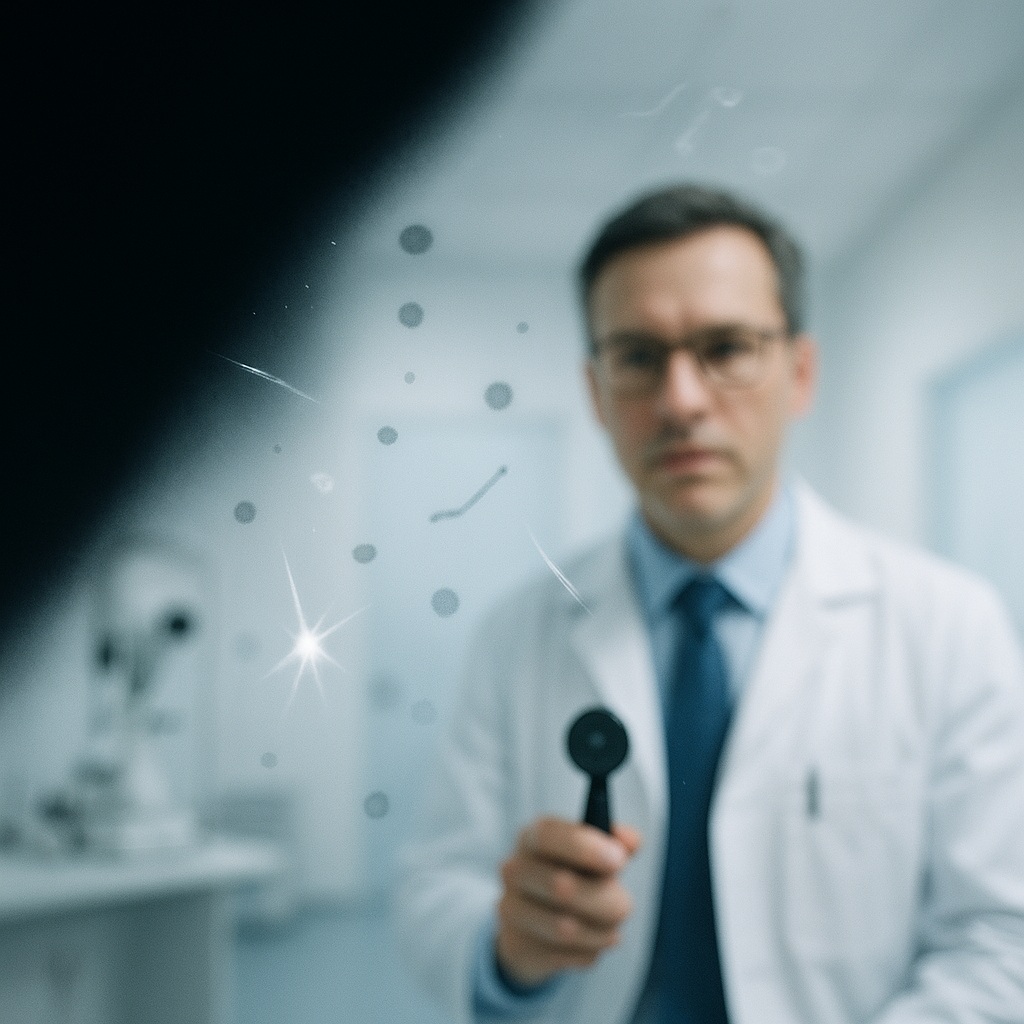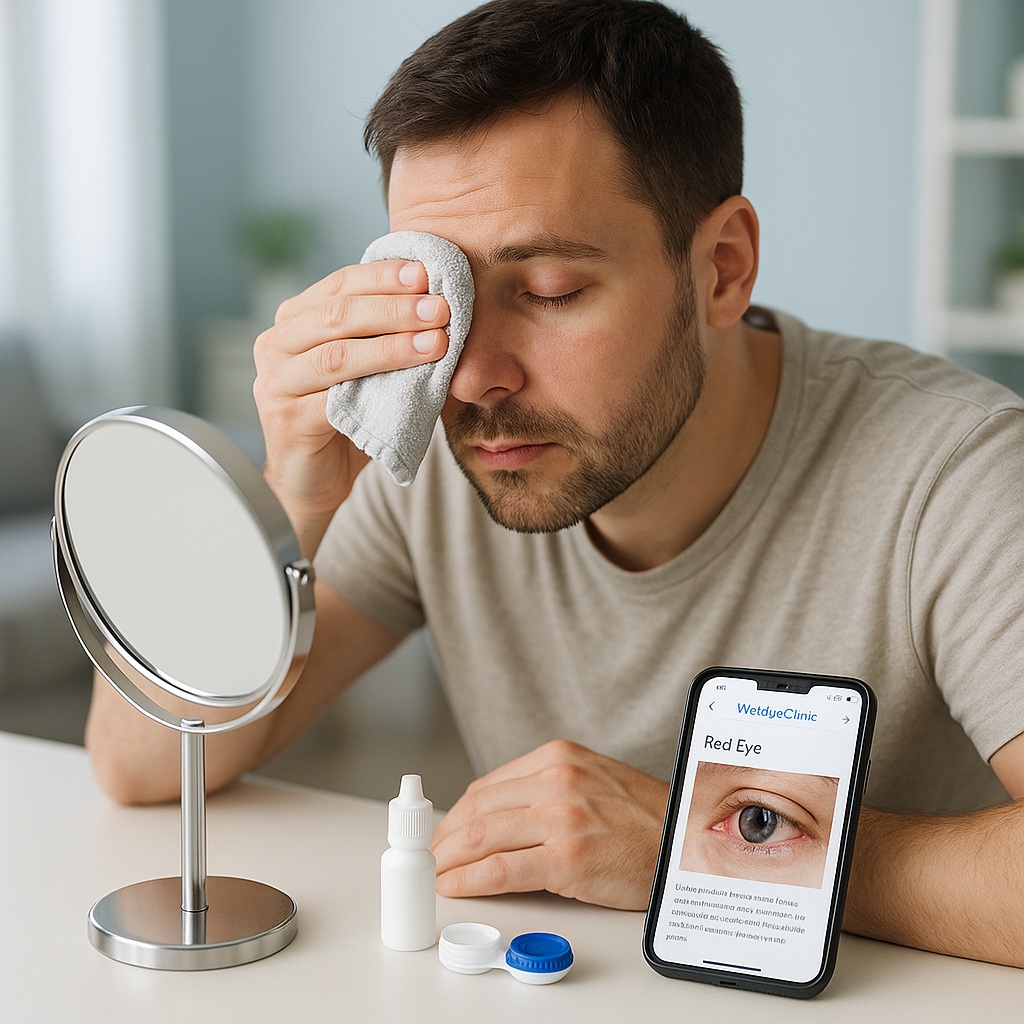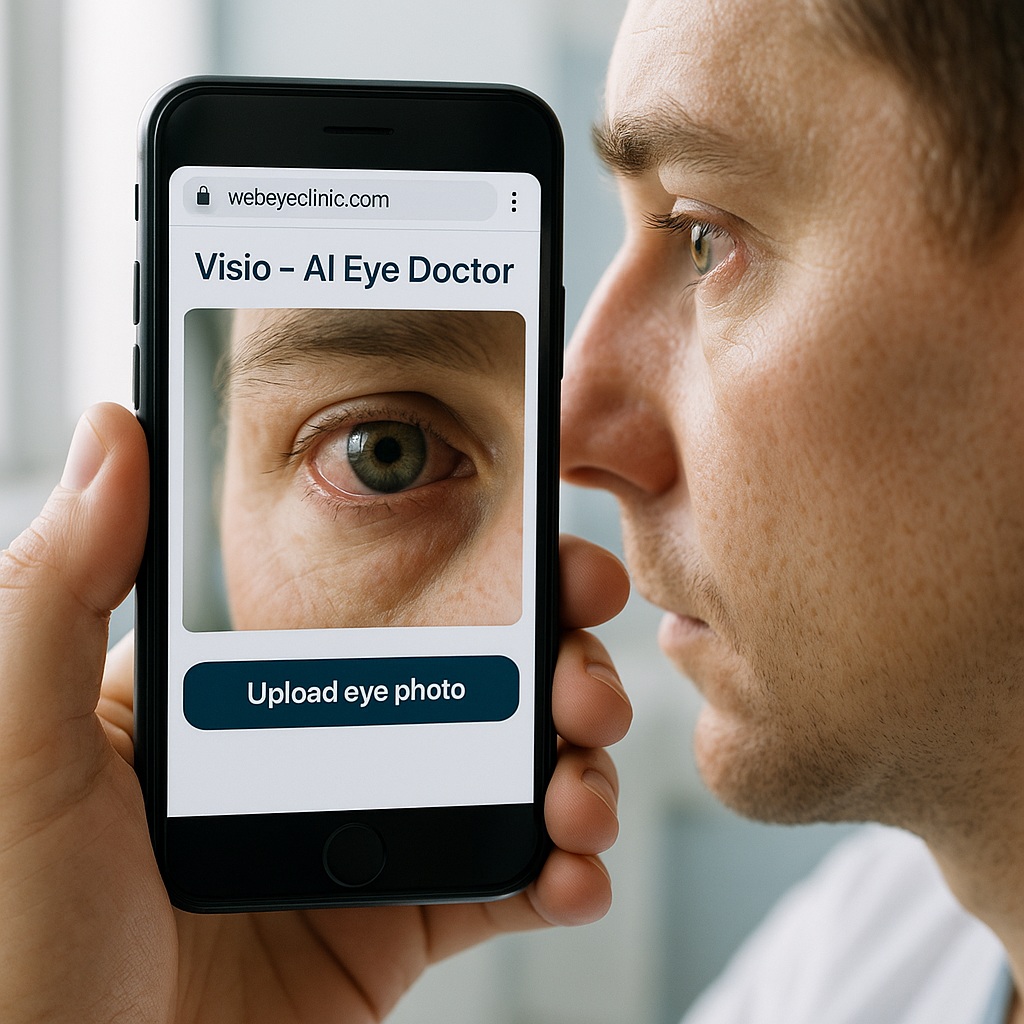Published: October 2025
This guide is written for anyone worried about urgent eye symptoms and was medically reviewed by an eye doctor. Some eye problems cannot wait. Read this before you “wait and see.”
Is this an eye emergency — or can it wait? That is one of the most common questions people ask online. They notice new floaters, a red painful eye, sudden blurry vision, or a dark “curtain,” and they want to know: “Do I need to go now, or is this normal?” The truth is that certain eye symptoms can signal retinal detachment, eye stroke, severe infection, or dangerously high eye pressure. Those conditions can permanently damage vision in hours if you delay care. Sudden vision loss is considered an emergency, even if it does not hurt.:contentReference[oaicite:0]{index=0}
Below are five warning signs you should never ignore. If you have any of these, treat it as urgent. Do not drive yourself if your vision is affected. Go to emergency eye care, urgent ophthalmology, or an emergency department that can call an eye specialist.
1. Sudden Flashes, New Floaters, or a “Curtain” in Your Vision
If you suddenly see a burst of new floaters (dots, cobwebs, threads, squiggly lines) plus flashes of light — especially off to the side of your vision — you may have a retinal tear or a retinal detachment.:contentReference[oaicite:1]{index=1} The retina is the thin layer of nerve tissue that lines the back of the eye. It is responsible for capturing light and sending visual signals to your brain. If the retina pulls away or detaches, that can permanently destroy part of your vision.
Common emergency signs of retinal detachment include:
- A sudden shower of new floaters.
- Flashes of light, like lightning or camera flashes, especially in dim light.
- A gray shadow or dark “curtain” moving across part of your vision — side vision or the center.:contentReference[oaicite:2]{index=2}
This is an emergency. Retina specialists treat retinal tears and detachments with laser or surgery. The sooner you are seen, the more vision can often be saved. Waiting until “tomorrow to see if it clears” can lead to permanent blind areas in that eye.:contentReference[oaicite:3]{index=3}
2. Sudden Vision Loss or Sudden Blurry Vision in One Eye
If you lose part or all of your vision suddenly — especially in one eye — treat it as an emergency, even if it doesn’t hurt.:contentReference[oaicite:4]{index=4} People sometimes describe this as:
- “I woke up and one eye is blurry.”
- “Half of my vision is missing.”
- “There’s a gray spot in the center.”
- “I’m seeing like a tunnel — everything around is gone.”:contentReference[oaicite:5]{index=5}
Several dangerous problems can cause this:
- Retinal detachment (discussed above).
- Eye stroke (central retinal artery occlusion): a blockage that cuts off blood to the retina. This can cause sudden, painless loss of vision. Fast treatment matters because retina and brain stroke risk are linked.:contentReference[oaicite:6]{index=6}
- Acute macular change: fluid or bleeding under the macula (the part you use to read faces and text) can cause a new dark or warped area in the center of vision. Straight lines may suddenly look wavy.
Any sudden vision change like this should not be “watched at home.” If vision in one eye drops or goes cloudy in minutes or hours, or a piece of your vision disappears, get urgent in-person care the same day.:contentReference[oaicite:7]{index=7}
3. A Red, Painful Eye — Especially With Light Sensitivity, Headache, Nausea, or Seeing Rainbow Halos
A mildly red eye with mild itching can be simple irritation or allergy. But a red eye that hurts, makes light unbearable, or comes with nausea or headache is different. That combination can mean a severe infection or dangerously high eye pressure.:contentReference[oaicite:8]{index=8}
Two emergencies eye doctors worry about are:
- Acute angle-closure glaucoma: The pressure inside the eye spikes very fast. Symptoms can include severe eye pain, headache, red eye, halos or rainbows around lights, nausea or vomiting, and blurry or cloudy vision. This can permanently damage the optic nerve within hours if untreated.:contentReference[oaicite:9]{index=9}
- Corneal ulcer or severe corneal infection: This can happen in contact lens wearers, especially if they sleep in lenses or wear lenses too long. The eye becomes red, painful, and light-sensitive. Vision can blur fast. Corneal ulcers can scar and steal vision permanently if not treated quickly with antibiotic drops from an eye doctor.:contentReference[oaicite:10]{index=10}
Key rule: red eye + pain + light hurts = same-day urgent care. Do not keep wearing contact lenses. Do not self-treat with leftover drops. Do not assume it’s “just pink eye.”:contentReference[oaicite:11]{index=11}
4. Something Hit Your Eye, Scratched Your Eye, or Chemical Got in Your Eye
Eye trauma is always a reason to take action. If anything strikes the eye (a fingernail, metal shaving, sports injury, bungee cord, exploding battery, fireworks debris, etc.), you can have internal damage even if the surface “looks okay.”:contentReference[oaicite:12]{index=12} Tiny cuts can get infected. Deeper injuries can bleed inside the eye. High-speed impact can detach the retina. You can even have a piece of foreign material still inside.
Chemical exposure — cleaning products, automotive fluids, hair dye, sanitizer, bleach — is also an emergency. Chemicals can burn the cornea in seconds.
What to do:
- Chemical splash: Immediately rinse the eye with clean water or saline for 15–20 minutes nonstop. Hold the eyelids open while flushing. After rinsing, seek urgent care.
- Impact / sharp injury: Do not rub the eye. Do not try to pull anything out. Do not apply pressure. Go for urgent professional care the same day.:contentReference[oaicite:13]{index=13}
Do not “sleep on it and check in the morning.” Trauma is one of the biggest causes of preventable vision loss, especially in younger and working-age adults.
5. Straight Lines Suddenly Look Wavy or Distorted
If you look at text on a page or tiles on the floor and straight lines suddenly look bent, rippled, or “melted,” especially in the center of your vision, that is not normal. This can mean new fluid or bleeding under the macula — the part of the retina that gives you sharp central detail for reading and recognizing faces. Sudden distortion or a gray/black spot in the center of vision can be a sign of a macular emergency, including the wet (leaking) form of age-related macular degeneration. That often needs urgent retina treatment to protect vision.:contentReference[oaicite:14]{index=14}
Do not wait for this to “clear up.” Central vision damage can become permanent if not treated quickly, especially if there is active leakage or bleeding under the retina.
How to Tell “Emergency Now” vs “Call Soon”
Use this rule:
- Emergency now (same day, immediately): sudden vision loss; vision going dark in one area; flashes + new floaters + curtain; a red painful eye with halos, nausea, or vomiting; a chemical splash; or an eye injury.:contentReference[oaicite:15]{index=15}
- Call urgently (same day/next available urgent slot): new distortion in the center of vision, sudden cloudy vision in one eye, or a very irritated red eye after contact lens wear.:contentReference[oaicite:16]{index=16}
Anything on this list means you should NOT drive yourself unless you truly have no vision changes and only one eye is irritated. If you are losing vision, ask someone to take you or call emergency services.
Can Online Help Replace an Emergency Visit?
Online tools like symptom checkers and AI health assistants can help you describe what you’re seeing and understand possible causes. They can also help you prepare questions for the doctor so you don’t forget anything under stress. That is where services like our Ask the Eye Doctor feature can help: you describe your symptoms in your own language and get guidance on what sounds urgent and what questions to ask in clinic.
But there is a hard safety line: no website, no AI, and no chat — including ours — can examine the inside of your eye, look at your retina, measure your eye pressure, or treat a tear, ulcer, or glaucoma attack. Sudden vision loss, a painful red eye, or a “curtain” in your vision is hands-on, same-day medicine.:contentReference[oaicite:17]{index=17}
If you are not sure whether what you’re feeling is urgent, start here:
Ask the Eye Doctor.
We can help you put your symptoms into clear medical language and tell you if they sound like “go now.”
Bottom Line: Do Not Wait on These 5 Red Flags
You should seek urgent in-person eye care the same day if you notice:
- A burst of new floaters, flashes, or a curtain over your vision (possible retinal detachment).
- Sudden vision loss, sudden tunnel vision, or sudden severe blurriness in one eye (possible retinal emergency, eye stroke, or optic nerve problem).
- A red, painful eye with halos, nausea, or light sensitivity (possible acute glaucoma or corneal infection).
- Eye trauma or chemical burn.
- Straight lines that suddenly look bent or warped in the center of your vision (possible macular emergency).
Eyes do not “heal themselves” from retinal detachment, acute glaucoma, or a severe corneal ulcer. These are time-sensitive emergencies. Fast care can protect vision. Delayed care can mean permanent vision loss.
Medically reviewed by: SR, MD, Ophthalmologist (Retina Specialist).
Last updated: October 25, 2025.


